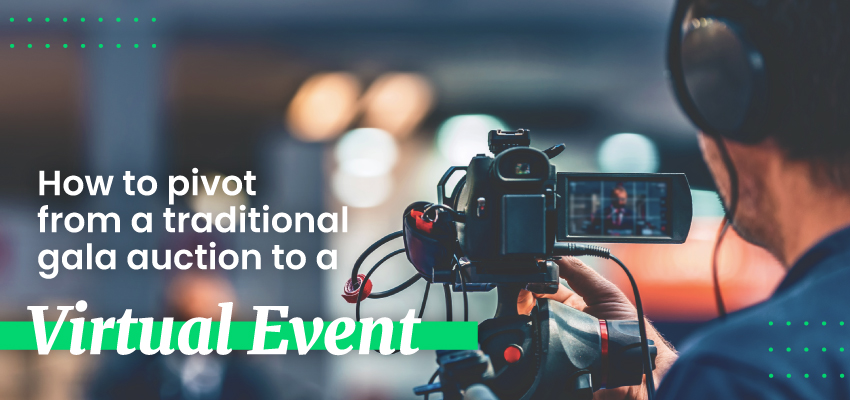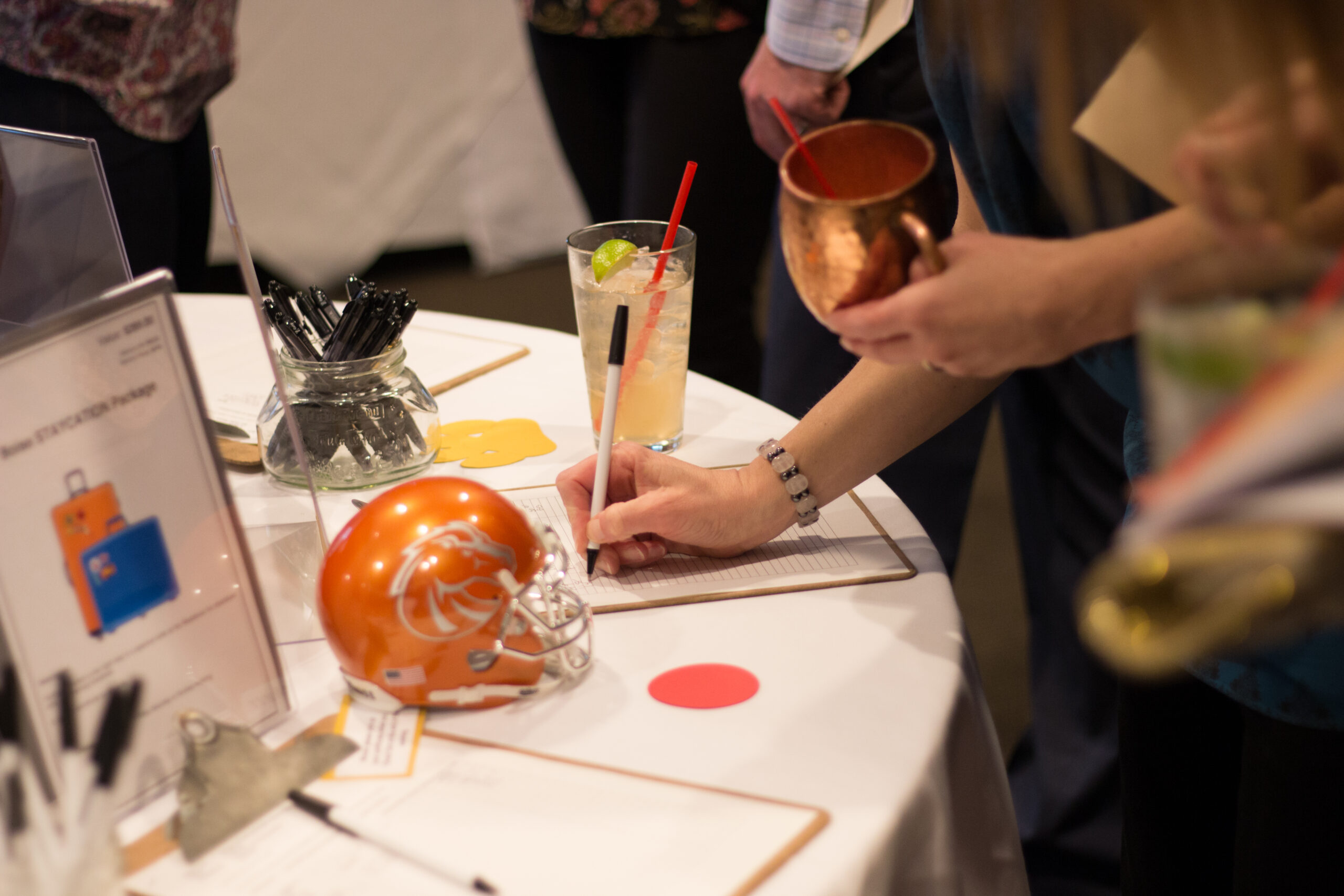Virtual Events are popular. In fact, almost one-third of adults in the US have participated in one. While traditional gala auctions offer a great way to connect with your supporters and raise more funds, a Virtual Event can be a great alternative.
Plus, pivoting from an in-person event to a virtual one doesn’t have to be complicated. With the right planning and tools, you can host a virtual fundraiser that gets great results. Let’s take a look so you can start planning your Vitual Event.
Step 1 | Set Goals for your Virtual Event
Your goals may need to change if you are pivoting from a traditional gala event to a Virtual Event. For starters, your reach may be different—meaning your potential participants could very well change. Consider reevaluating your attendance and participation goals.
A Virtual Event allows you to reach more people than you may otherwise since those who are not in the immediate geographic area can participate online. In addition, because there is not a traditional gala event, your audience can even participate if they have other plans.
You may also want to take a second look at how much funds you expect to raise through your Virtual Event. You may be able to increase your goals since virtual fundraising can allow more people the opportunity to give.
Step 2 | Plan Your Virtual Program
Just because you aren’t hosting a traditional gala event doesn’t mean you can’t have a full program. A Virtual Event can still feature presenters, performances, speakers with testimonials, and many other options.
You can use a previous gala event program as your starting point. However, keep in mind that during a virtual program you will definitely want to keep your participants’ attention. Quick transitions between segments can help keep them engaged.
You should make sure to be very clear with your presenters how the program will flow and how a Virtual Event works. Having a host can help everything flow more smoothly.
When planning the schedule, remember that you should make a donation call to action early during the event. Then, be sure to ask often throughout the rest of the Virtual Event. Attendees may join or leave at various times, so you want to try to catch them at the appropriate times.
Step 3 | Determine Your Platform, Resources, & Materials
Once you know what your program will look like, you can start to gather the resources and materials that you need. One of the biggest decisions to make is what platform you will use to stream your Virtual Event. This will be determined by what you plan to do during the program.
For example, if you want to show slides, videos, or multiple presenters, you would need a screen-sharing service. You should think about whether you plan on having a live stream or using pre-recorded videos.
You will also need a platform that can host the actual auction. Services such as Zoom can’t handle this, so you should look into a dedicated virtual auction program, like us here at Auction Frogs!
Our Virtual Event platform can host your auction items and capture bids. Plus, additional features such as online pledge capture, ad space for supporters, and a goal thermometer makes hosting a Virtual Event with Auction Frogs even easier and more successful.
You may also need additional materials, such as microphones and webcams. These items are sometimes forgotten until the last minute but can make a big difference in helping your Virtual Event run smoothly.
Step 4 | Promote Your Virtual Event
Promoting your Virtual Event effectively is incredibly important. Your event can either have paid ticketing or be free to participate. Creating an RSVP form will allow you to get the information for those who are planning on attending.
When you are promoting auctions online, it’s important to take advantage of every marketing channel you have. Make sure to send emails and text messages to those on your mailing list. You can even use direct mail.
Social media is a great way of reaching more people, even those outside of your normal fundraising circle. Create eye-catching graphics and be sure to share them on all of your social media channels.
Step 5 | Have a Dress Rehearsal
A dress rehearsal is vital, especially if your organization has never hosted a Virtual Event before. Dress rehearsals will help ensure everything will run smoothly, which can also reduce nerves and stress among your team members.
If you are having guest presenters, have them test their equipment and make sure they are comfortable with their role. If you plan on showing a video or other media, have a test play to make sure it plays correctly.
You should also test the participant experience. Make a test donation to be sure all of your content and messaging is set up how you want it. Also, click through the event pages and all the links to ensure your attendees can access the event.
Step 6 | Host Your Virtual Event
Testing everything and having a step-by-step plan will ensure your Virtual Event runs smoothly. On the day of, make sure you have fun with your fundraiser. Interact with your audience and thank your supporters.
After your Virtual Event is over, you can rehash what went well with your team and how you can grow your fundraiser for the next year.
Pivot to a Successful Virtual Event
Virtual Events for nonprofits are a great way to reach a larger audience than you ever could with a traditional gala auction. While pivoting to a Virtual Event may be a little scary, plenty of planning and the right tools will make your event a fundraising success.
Take a tour of Auction Frogs to get started with your Virtual Event today!



